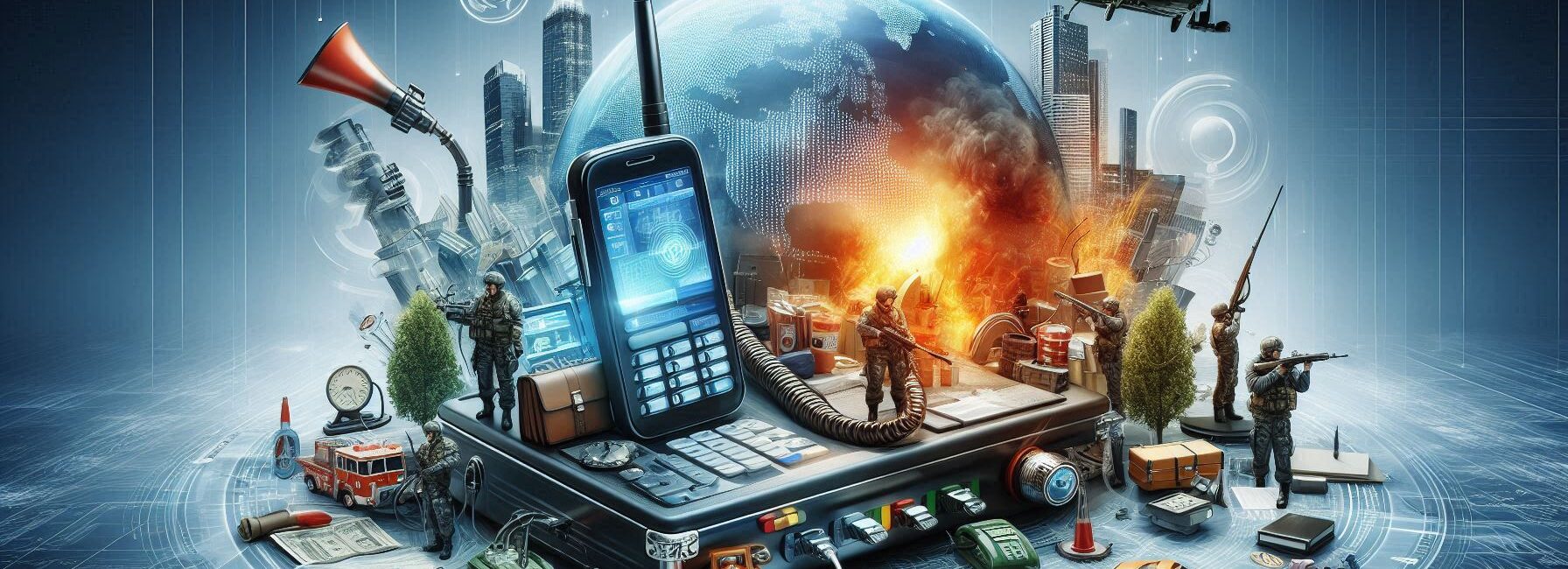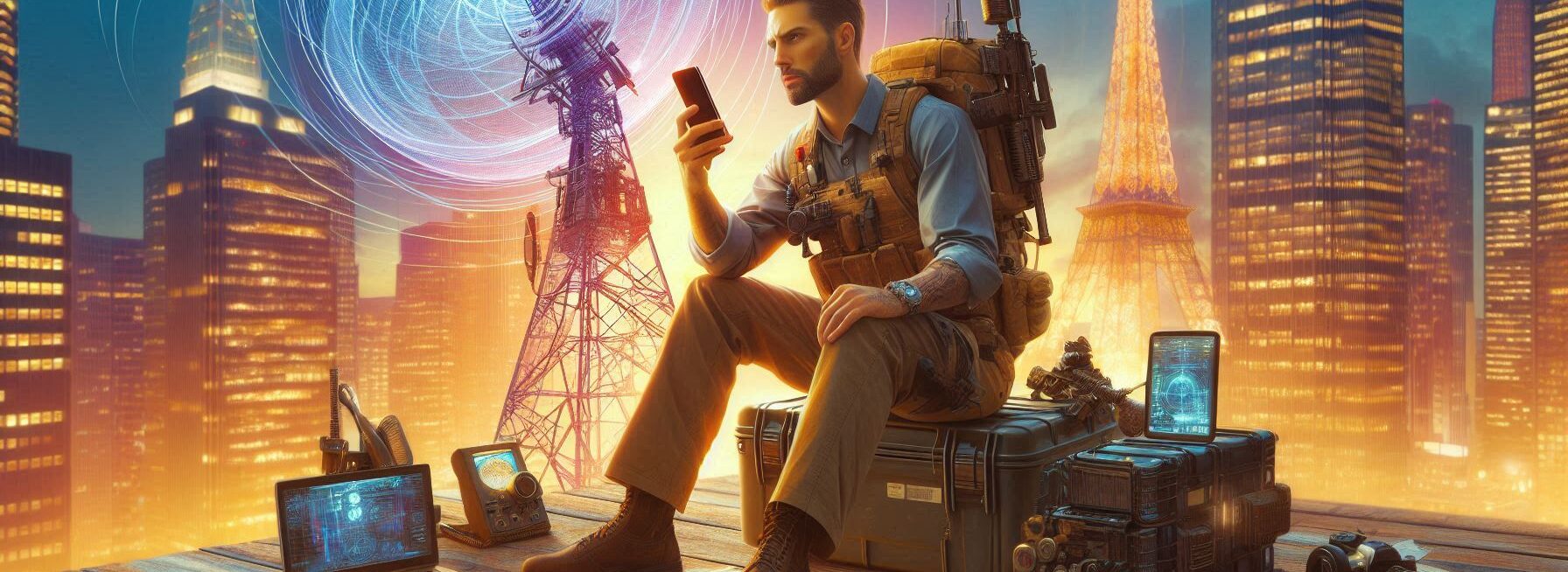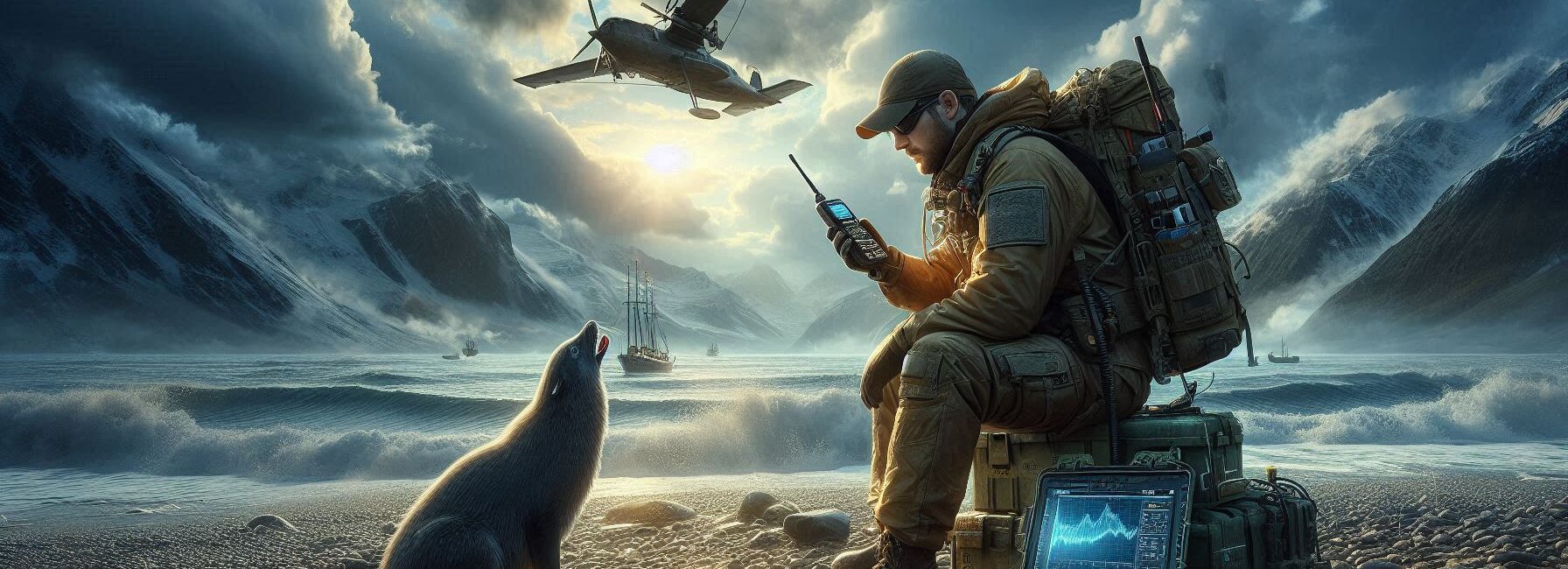Please Note: This post may contain affiliate links. If you click one of them, we may receive a commission at no extra cost to you. As an Amazon Associate, I earn from qualifying purchases.
Last Updated on November 2, 2025 by Kevin Collier
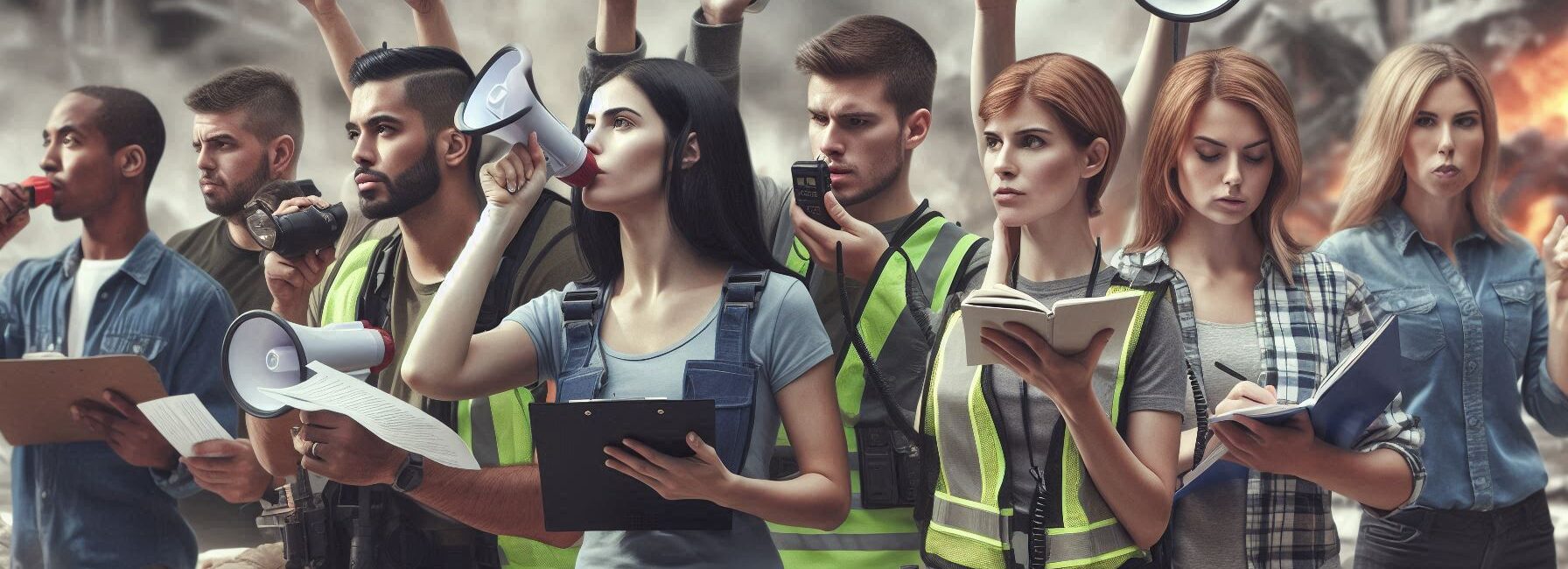
Top Takeaways and Key Concepts
- Create a family communication plan with meeting spots and key contacts.
- Assign roles to household members based on skills and responsibilities.
- Use multiple tools: phones, two-way radios, and social media groups.
- Keep emergency contact lists updated and share them with everyone.
- Establish non-verbal signals like flags, signs, or calm body language.
In a world where it often feels like things are upside down—civil unrest, wild weather, or just your neighbor’s dog howling at the moon at three in the morning—you really need a good plan for staying in touch.
Think about it. You want a way to connect with family and friends if things get a little crazy. No one wants to rely on smoke signals or pigeons, even if they are surprisingly good at finding their way home. We need something better!
Start with simple stuff like group texts or family chats. If there’s an emergency, you can quickly share updates. It keeps everyone in the loop without the back and forth. If your phone’s dead? No problem. Write down important contacts. Keep that list handy. Maybe stick it to the fridge.
Consider using social media. It’s a great way to reach a lot of people fast. Just be careful. Make sure what you post is true. Misinformation spreads like wildfire and can add to the panic.
Have a regular meet-up place, too. Think about where you’d head if you needed to gather everyone together. A local park or a friend’s house can be good spots. It’s like making a mini “emergency club.”
Sometimes, simple is best. Just checking in with a quick text can go a long way. If things feel overwhelming, just breathe. You’re not alone in this.
Keeping your cool and having a plan makes those wild times a bit easier to handle. You’ve got this! Next time chaos strikes, you won’t be out of the loop. You’ll be ready and able to connect, and maybe even share a laugh about it later.
The Importance of a Communication Plan

*** Shop for Survival Gear - Tools - Kits ***
Survival Gear - Bags and Backpacks - Knives - Boots/Footwear - Communication
Outdoor Cooking - Gloves - Hydration - Dry Boxes - Water Filtration Systems
Tents - Sleeping Bags - First Aid Kits - Multi-Tools - Flashlights - Fire Starters
Navigation - Survival Food - Night Vision - Headlamps - Stun Guns - Binoculars
If you think that only people who store canned beans and build bunkers need a communication plan, think again! A good communication plan can save lives and make sure everyone knows what's going on when circumstances get rough.
1. Stay in touch: It's important to stay in touch with family and friends when anything bad happens. When the lights goes out and cell towers go down, how will you let Aunt Edna know that her amazing chocolate chip cookies are still safe from raccoons? A plan lets you swiftly exchange vital information.
2. Assign Roles: Everyone wants to play a role in a crisis. Just ask any family member who thinks they know everything from first aid to fire safety. Give them specialized tasks depending on what they know how to do or what they like to do.
Uncle Bob can handle navigation if he knows how to read maps, and Cousin Sue can handle supplies. This way, everyone feels helpful and there is no turmoil!
3. Regular Check-Ins: Just like how we all have our guilty pleasures and check in on our favorite TV shows every week, checking in with loved ones regularly might help you feel better when things get tough. Make sure to set up times to contact or text each other so that no one feels left out or forgotten in the chaos.
Picking Communication Tools That Work

Choosing the correct tools for communication is like buying the best camping gear: you want something that will always work when you need it!
1. Cell phones: These small gadgets are terrific until they aren't, like when everyone chooses to call for help at the same time! During disasters, it's critical to have backup plans in case networks are too busy.
2. Two-Way Radios: Two-way radios can save your life in an emergency, so don't forget to bring them! You don't need mobile towers or Wi-Fi; just push a button and talk! Plus, they make things more fun—who doesn't want to feel like they're on a covert mission?
3. Social Media Groups: It's interesting that social media sites often become places where people can get real-time updates amid disasters or civil upheaval. Join local communities where people talk about what's going on in your neighborhood. You might even be able to locate someone who will exchange their handmade bread for your last pack of toilet paper!
Setting Up Emergency Contacts
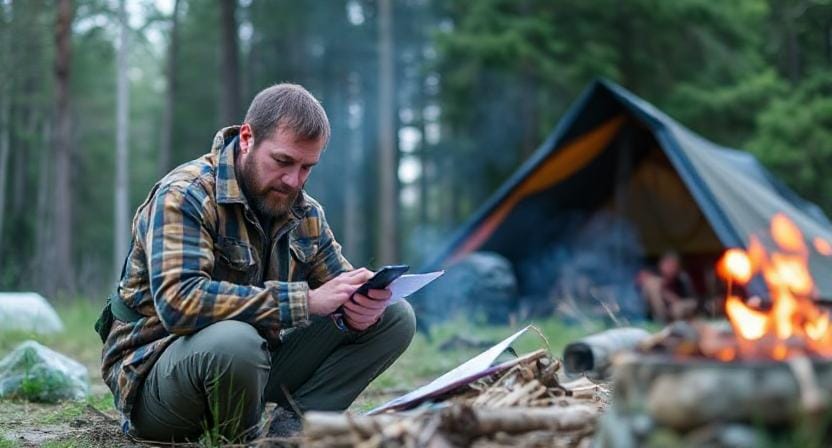
Having emergency contacts saved on your phone is just as important as remembering where you parked at Walmart after shopping for supplies.
1. Make a list of contacts: Make sure you save important numbers, not just Aunt Edna's. You should also save the numbers of local authorities and neighboring shelters in case something goes wrong (and yes, please add pizza delivery because priorities!).
2. Give Your List to Others: After you've made your list, give it to your family so they know who to call if things go wrong faster than you can say, “Where did I put my flashlight?”
3. Keep it up to date: Life changes quickly! People move around more than squirrels chasing after nuts, therefore keep this list up to date so that everyone knows who is who.
Using Signals Without Words

But there are instances when words just don't work (like when you're freaking out because you can't find the car keys). That's why it's helpful to use non-verbal cues!
1. Make Simple Codes: Use colored flags outside your house to show if it's safe or not (green means “all clear,” red means “run!”). It also makes things more exciting!
2. Visual Signals: If your survival circle includes more than one family (let's be honest, we all need help), put up signs near entrances that show whether it's safe or not, or where to meet up.
3. Body language is very important. Keep in mind that it says a lot! Instead of throwing your arms around in a panic, practice calm motions. If you don't, you'll look like you're trying out for interpretive dance instead of asking for help.
Getting Information from Reliable Sources
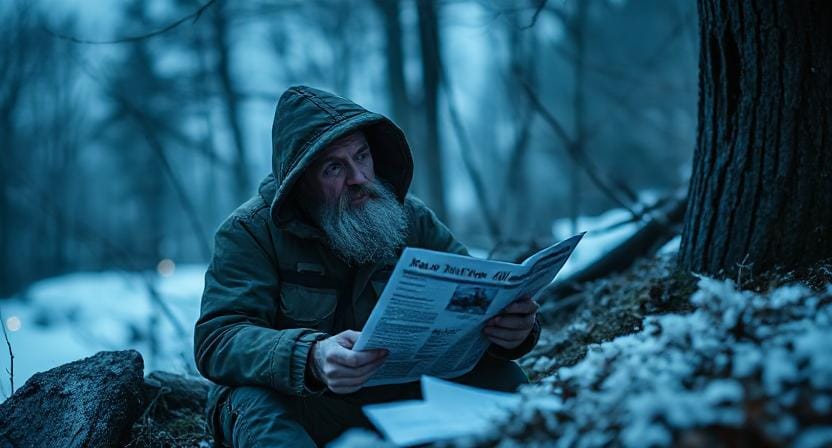
To be fair, and this might surprise some people, not all news sources are the same! When things go wrong, false information spreads like wildfire, so it's important to know where to go for help.
1. Keep an eye on local news sources: Find trustworthy local news sources that give you real-time information on events that are happening in your area. These people usually know more about what's going on than anybody else.
2. Use Official Channels: Government agencies regularly send out alerts about emergencies through websites or apps. They might not always be fun, but trust me, they're useful!
3. Community Networks: It's interesting that neighborhood watch groups often step up during crises by sharing useful information with people who live near the events that are happening—don't be afraid to call out!
Conclusion
You know, it's a lot easier when families work together to establish a decent plan for talking to each other. Think about it. You and your friend are sitting together, maybe on the couch, and talking about what to do if something unexpected happens. Having a plan is good, isn't it?
Think about the times when things go wrong. Knowing that you've already talked about how to stay in touch can be comforting. Knowing who to call or where to meet can actually help with simple tasks.
It can be really helpful to use a variety of tools. You could set up a family group chat. This manner, everyone gets the same information at the same time. It's alright if someone can't find their phone or loses it. Just make sure everyone knows the basics. Put key numbers where everyone can see them.
You can also put down a few things to check in on quickly. You can say something like “I'm okay” or “Need help” to be very clear and quick. Isn't it fun? It takes some of the weight off of a terrible problem.
Staying in touch with one other through life's obstacles makes everyone feel safer. Knowing where to go and who is there during a storm can be a huge relief.
Getting everyone on board helps people trust one other and work together. Keep in mind that you don't have to be perfect. It's important to be ready and look out for one other. You're not just thinking about what might happen. You are also making solid connections.
You'll be ready the next time life throws you a curveball. You'll have that bond and that understanding with each other. You can handle anything that comes your way together. And who knows? You could even find something funny along the way.
Frequently Asked Questions
Why is a family communication plan important during civil unrest?
It prevents confusion, keeps everyone informed, and ensures people know where to meet or who to contact if devices fail.
What tools are most reliable when networks go down?
Two-way radios work well because they do not require cellular towers or internet access to transmit messages.
How often should contact lists be updated?
Update lists regularly, especially after moves, phone number changes, or when new emergency contacts become available.
Can social media be useful during disasters?
Yes, but verify information before sharing because false information can create unnecessary panic or confusion.
What non-verbal signals can help communicate safety or danger?
Colored flags, written signs, and calm, intentional body language can quietly alert others when speaking isn’t safe.
Why assign roles to family members?
Assigning roles helps distribute tasks so everyone has purpose, which improves teamwork and keeps stress lower.
Should backup meeting spots be chosen ahead of time?
Yes, designating safe nearby locations ensures people can regroup quickly if communication devices stop working.
Suggested Resources:
Emergency Communication Plan
https://www.ready.gov/communication-plan
How To Use Two-Way Radios
https://www.survivopedia.com/use-two-way-radios/
Emergency Preparedness Tips
https://www.redcross.org/get-help/how-to-prepare-for-emergencies.html

Kevin Collier is a seasoned survivalist and expert in prepping and homesteading, contributing to WiseSurvive.com. With a deep-rooted passion for self-sufficiency and outdoor survival skills, Kevin shares practical advice, strategies, and resources to help individuals prepare for any challenge. His informative articles cover a range of topics, from essential survival techniques to sustainable living practices, empowering readers to thrive in any situation. Whether you're a novice or a seasoned prepper, Kevin's insights will inspire you to take charge of your readiness and build resilience for the future.

